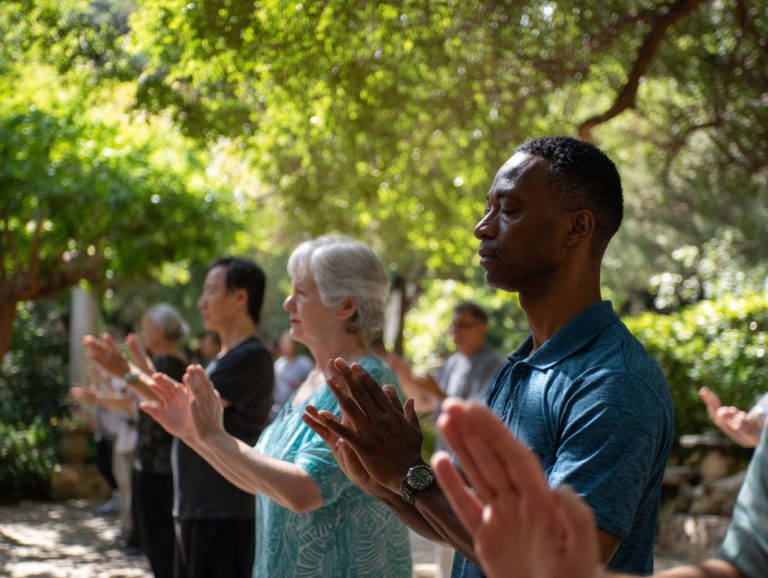How to Select a Tai Chi Instructor: Key Considerations
Choosing a good Tai Chi teacher is important for learning and enjoying this ancient practice. Whether you want to learn Tai Chi for its health benefits or to go along with your Qi Gong practice, finding the right instructor can greatly improve your experience. This guide, with advice from experts like Henry, outlines important factors for selecting the right Tai Chi instructor, so you have a fulfilling and secure learning experience.
Key Takeaways:
Contents
- 1 Tai Chi Instructor Demographics and Effects on Health
- 2 Importance of Selecting the Right Instructor
- 3 Qualifications to Look For
- 4 Teaching Style and Philosophy
- 5 Class Environment and Culture
- 6 Trial Classes and Observations
- 7 Cost and Commitment
- 8 Frequently Asked Questions
- 8.1 What are the key considerations when selecting a Tai Chi instructor?
- 8.2 What is the importance of an instructor’s experience in Tai Chi?
- 8.3 How can I determine an instructor’s teaching style?
- 8.4 What credentials should I look for in a Tai Chi instructor?
- 8.5 Is location an important factor when selecting a Tai Chi instructor?
- 8.6 What are some other factors to consider when selecting a Tai Chi instructor?
What is Tai Chi?
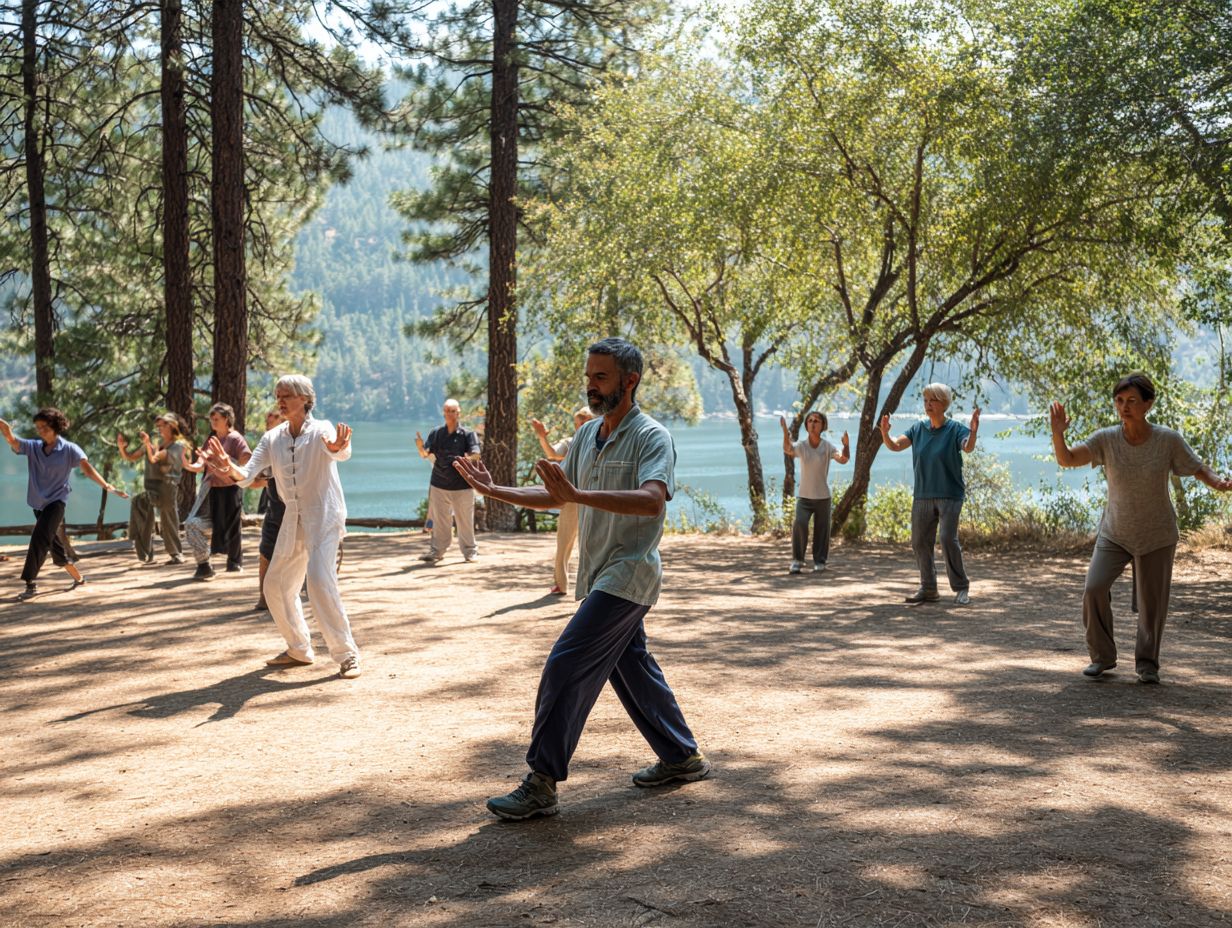
Tai Chi, also known as Taijiquan, is a traditional Chinese martial art that emphasizes slow, controlled movements combined with deep breathing and meditation.
Originating from Taoist philosophy, Tai Chi reflects principles of yin and yang, promoting balance and harmony in both body and mind. Over time, it changed from a method of self-defense into a complete approach centered on health and wellness. For those interested in a comprehensive overview, Wikipedia’s Tai Chi article offers detailed insights into its evolution and practice.
Well-known people like Grandmaster William CC Chen have made it more popular in Western countries by highlighting how it helps reduce stress and make the body more flexible. His lessons explain how to practice Tai Chi during everyday tasks, making it accessible for newcomers and enthusiasts alike. Additionally, Tai Chi shares similarities with other traditional Chinese practices such as acupuncture, which can be further explored through [assessing acupuncture benefits](https://sereneclinics.com/holistic-health/traditional-medicine-systems/traditional-chinese-medicine/acupuncture/acupuncture-for-pain-relief/acupuncture-benefits-guide/) in our comprehensive guide.
Benefits of Practicing Tai Chi
Doing Tai Chi regularly can greatly improve your health. It helps you balance better, lowers stress levels, and clears your mind. People of all ages can practice it, and Healthline notes that it is particularly beneficial for stress reduction.
To start incorporating Tai Chi into your routine, consider these actionable steps.
- Join a local class or online session; platforms like Tai Chi for Health offer structured courses.
- Aim for at least two sessions a week, gradually increasing your practice duration.
- Use resources like YouTube videos that offer step-by-step guides on important moves such as ‘Cloud Hands’ and ‘Single Whip’.
- Using a journal to track your progress can make you more aware, allowing you to think about your growth and experiences during your practice. For those looking to deepen their understanding, exploring the Tai Chi certification process can be beneficial.
Tai Chi Instructor Demographics and Effects on Health
Tai Chi Instructor Demographics and Effects on Health
Discover the peaceful balance between mind and body that practices like Tai Chi and Yoga offer. These ancient disciplines are renowned for enhancing wellness through their unique techniques and holistic benefits.
Tai Chi Health and Function Improvements: Fall Prevention
Tai Chi Health and Function Improvements: Physical Function and Fitness
The Tai Chi Instructor Demographics and Effects on Health The dataset gives useful information on how Tai Chi benefits health, especially by lowering the risk of falls and boosting physical ability and fitness. This information is important for learning about the health advantages of Tai Chi, especially for people who have a risk of falling and those with ongoing health issues.
Fall Prevention is an important field where Tai Chi has demonstrated great benefits. The practice results in a 19% reduction in the rate of falls and a 20% reduction in the number of people experiencing falls. These statistics show that Tai Chi is good for improving balance and coordination, which are important for preventing falls, especially in older adults. Adding balance exercises to Tai Chi results in even better outcomes, with a 24% reduction in falls and a 13% reduction in the number of people experiencing falls. This suggests a synergistic effect when Tai Chi is combined with specific balance exercises.
- Physical Function and Fitness: Tai Chi demonstrates substantial benefits in improving physical function and managing pain associated with chronic conditions. For individuals with fibromyalgia, Tai Chi improves pain scores by 657 points, indicating significant relief from the debilitating pain that often accompanies this condition. Additionally, Tai Chi benefits 1,663 participants with COPD, likely through improved breathing techniques and increased physical endurance. In studies on knee osteoarthritis, Tai Chi has facilitated improvements in 986 cases The exercise is useful for improving joint movement and decreasing discomfort.
The data shows that Tai Chi helps with physical recovery and also improves general health and well-being. Its low-impact nature makes it accessible to a broad demographic, from the elderly to those with chronic health issues. By including Tai Chi in regular workout routines, people can enjoy better balance, less pain, and improved physical ability, leading to a better quality of life.
Importance of Selecting the Right Instructor
Picking the right Tai Chi teacher is important for learning well and affects both how you improve and how much you enjoy practicing. To understand what makes a good instructor, it can be helpful to learn about the Tai Chi certification process, which ensures teachers have the necessary skills and knowledge.
Impact on Learning
The relationship between a student and their Tai Chi instructor can significantly impact the student’s learning curve and overall progress in the practice.
A good teacher changes their teaching style to meet each student’s needs. For example, if a student has trouble with balance, the teacher might include specific exercises that strengthen the core and improve stability, like standing on one leg.
They can modify the pace of lessons: some students may benefit from slower demonstrations, while others thrive with faster flows. Regular feedback sessions also allow instructors to reassess progress and adjust techniques accordingly, ensuring that each student remains engaged and challenged at the right level.
Safety Considerations
Safety in Tai Chi practice is paramount, particularly for beginners or those with existing health concerns, and it is essential to choose an instructor who prioritizes this aspect.
A good instructor should implement specific safety measures, such as thorough warm-ups to prepare the body, which can significantly reduce injury risk.
It’s necessary to offer adjustments for people with health issues, so everyone can participate safely. Setting up a safe training space, without dangers or interruptions, is very important.
According to a study, injury rates in martial arts can range between 1.4% to 16%, highlighting the importance of these precautions.
Qualifications to Look For
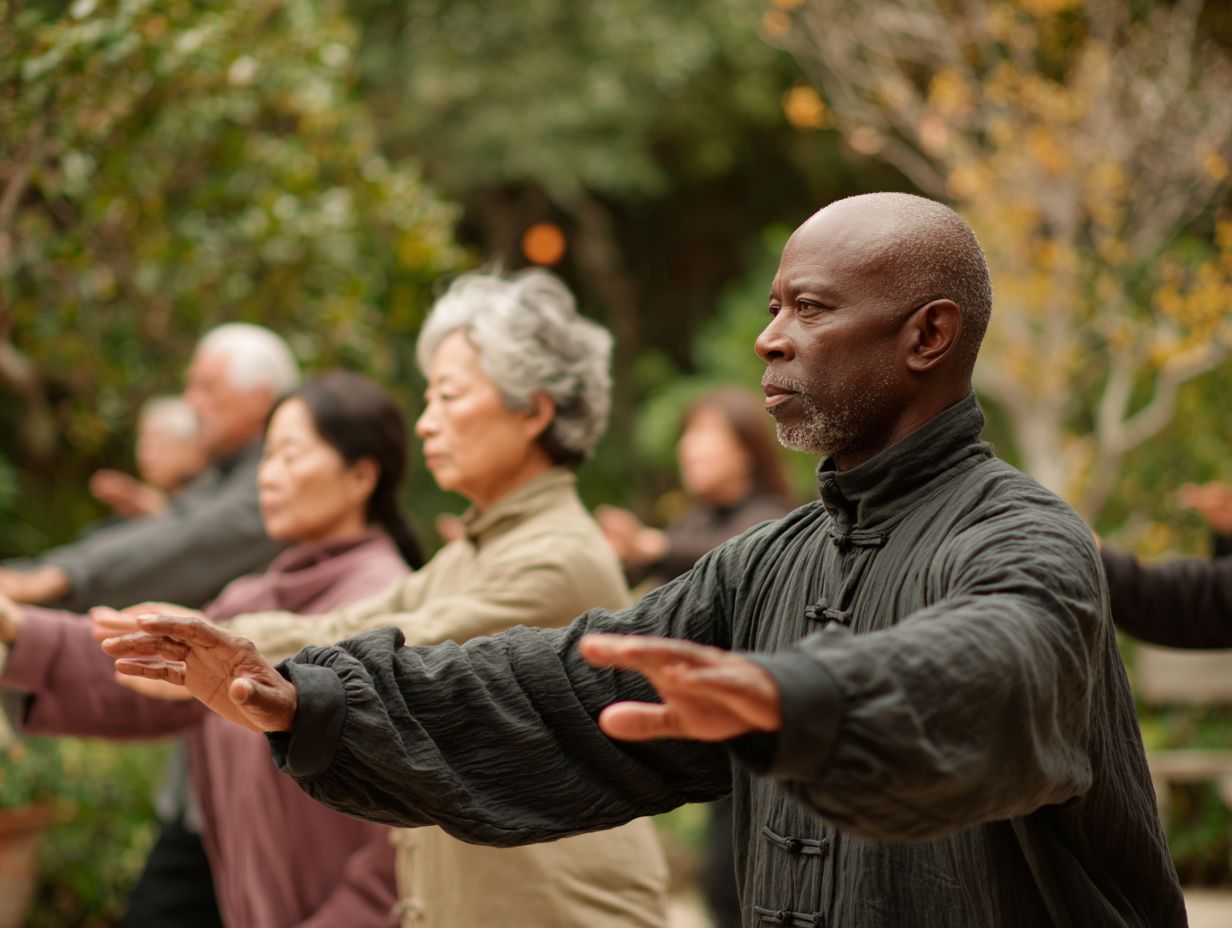
When looking for a Tai Chi teacher, it is important to know their qualifications and experience to guarantee good teaching and safety.
Certification and Training
Find teachers with recognized qualifications, such as those from the Tai Chi for Health Institute or similar groups, which confirm their skills and training.
These certifications confirm that instructors have completed thorough training and follow set teaching standards.
Certifications from the American Council on Exercise (ACE) and National Academy of Sports Medicine (NASM) provide widely accepted credentials that increase an instructor’s trustworthiness. This aligns with offerings like the Tai Chi Instructor Training Certification Course Part 1 available on platforms such as Udemy, which are designed to bolster instructors’ qualifications.
Opting for certified instructors means you will probably get safe and effective advice that suits your needs.
Many certified professionals continually update their skills through ongoing education, ensuring their methods remain current and effective in promoting health and wellness.
Experience Level
How well an instructor teaches and adjusts to what students need in a Tai Chi class can be strongly affected by how experienced they are.
Experienced Tai Chi teachers know many techniques and can adjust lessons to fit the skill levels of their students.
For example, a more experienced teacher might teach difficult moves in simpler steps for beginners and show more advanced uses for experienced students.
They often use different teaching methods, such as visual aids, hands-on help, and practical examples, to make sure everyone understands the concepts.
Being flexible creates a helpful learning space where students can advance at their own speed.
Specializations
Teachers might teach different types of Tai Chi, like Chen or Yang styles, to improve your learning.
Choosing instructors with specialized knowledge in areas like Qi Gong or push hands can significantly deepen your practice.
For example, a Qi Gong teacher might include breathing exercises to improve your Tai Chi practice, helping your energy move more smoothly.
Instead, a teacher good at push hands can teach you to become better at sensing and balancing, which are important parts of Tai Chi.
Think about joining workshops or classes that focus on these areas; they offer new ideas and show you different methods to improve your skills.
Teaching Style and Philosophy
The way an instructor teaches and what they believe in can greatly influence the environment in Tai Chi classes and how involved the students become.
Class Structure
A clear class setup is important for successful learning, helping students gradually improve their Tai Chi skills.
Using a warm-up, main practice, and cool-down helps to remember better and build regular habits. Start with a 10-minute warm-up to loosen joints and increase blood flow, which prepares students for movement and reduces injury risk.
The main practice should include a focused sequence of Tai Chi forms, allowing students to apply what they’ve learned while promoting mindfulness.
A 5-minute cool-down encourages reflection on the session, solidifying knowledge. This structure supports both physical benefits and helps develop a disciplined approach to learning and practice.
Communication Skills
Tai Chi instructors need good communication skills to explain techniques clearly and help students learn.
Using clear verbal instructions and showing visual examples helps students understand Tai Chi movements better. Describe each position in simple language, breaking down difficult moves into easy-to-follow steps.
Encourage feedback by asking students to mirror your movements, then correct them in real-time. Using video recordings can be useful. Watch and talk about them in later classes to help students learn better.
Establishing a supportive environment where students feel comfortable asking questions will greatly increase their engagement and comprehension.
Approach to Student Engagement
How a teacher involves students can greatly increase their interest and memory in Tai Chi practice.
Using interactive learning methods is essential. For example, teachers can use partner activities that encourage working together and talking to each other.
Having small group talks about methods or personal stories can create a sense of belonging and improve knowledge.
Creating a welcoming environment with open-floor Q&A sessions invites students to voice concerns or curiosities, enhancing their connection to the practice.
Showing pictures or videos can make it easier for students to learn challenging movements, making the lessons more engaging and enjoyable.
Class Environment and Culture
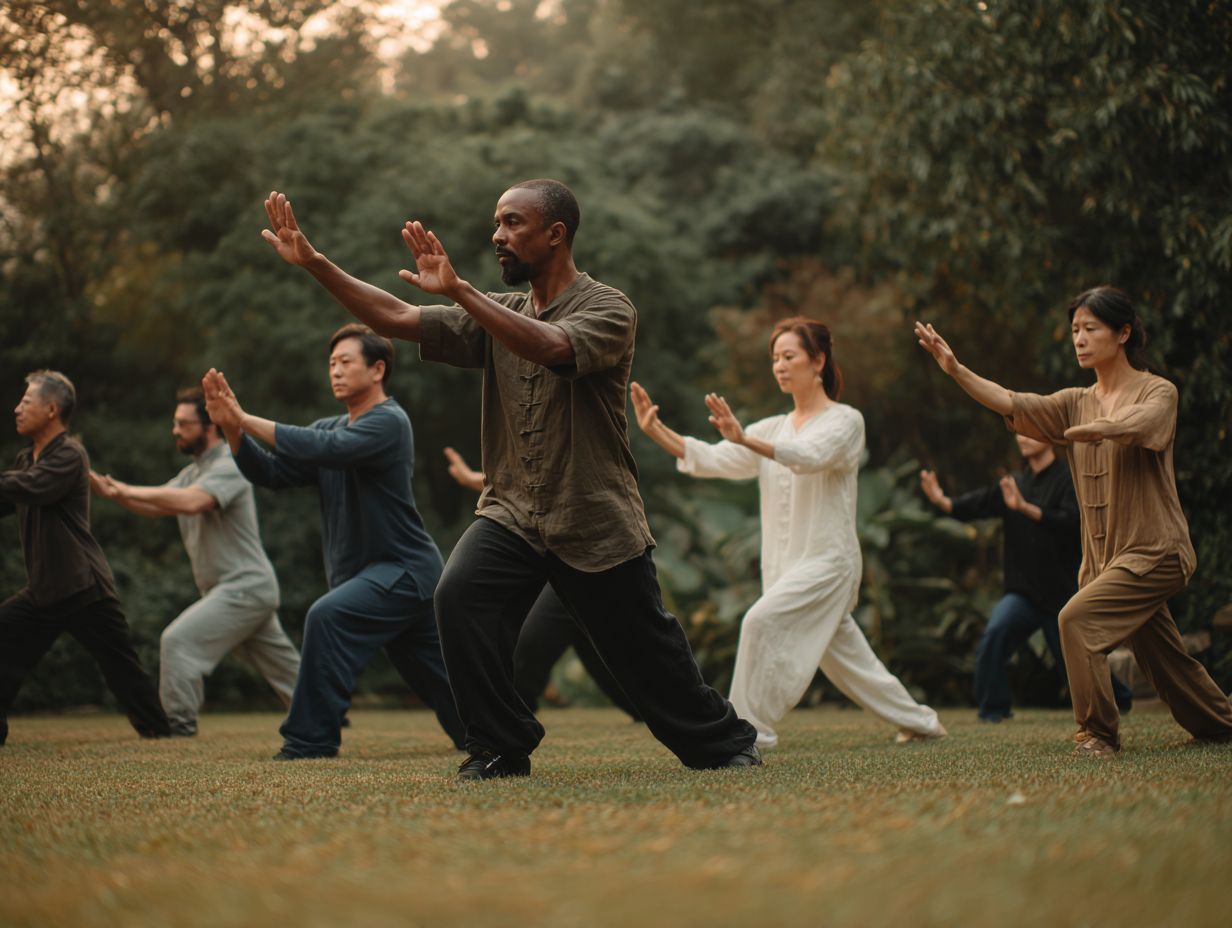
The atmosphere and community in the class are important for successful Tai Chi teaching and how students feel about their learning. For those looking to deepen their practice, understanding the Tai Chi certification process can offer invaluable insights.
Class Size
Class size can influence the level of individual attention students receive in Tai Chi classes, impacting their overall learning experience.
Smaller classes, with 5-10 students, offer significant benefits. In these environments, teachers can give specific feedback, helping each student improve their posture and method.
This facilitates quicker skill acquisition and builds stronger connections between students and teachers. Conversely, larger classes of 20+ students may dilute this individualized attention, leading to a more generalized teaching approach.
Larger classes can create a sense of community and bring different viewpoints, but they may restrict the teacher’s capacity to focus on individual student needs, which can slow down their progress.
Location and Accessibility
The location and accessibility of Tai Chi classes can significantly affect attendance and overall commitment from students.
When evaluating potential class locations, consider factors such as visibility, parking availability, and proximity to public transportation.
Ideally, the space should be in a quiet area, away from heavy traffic, to provide a calming atmosphere conducive to practice.
Visit the site at different times to assess foot traffic and noise levels. Look for facilities such as restrooms and waiting areas, which can improve the experience for students.
A welcoming and serene environment can greatly improve student retention and satisfaction.
Community Atmosphere
A friendly environment in Tai Chi classes can increase student motivation and help build long-term friendships between participants.
Instructors can create a supportive environment by planning activities like group workshops and social events.
For instance, hosting a monthly potluck encourages students to share both food and experiences, strengthening bonds. Working with partners encourages teamwork, and seasonal retreats offer engaging activities that strengthen relationships.
Instructors might also create online groups for discussions and sharing progress, maintaining engagement outside class.
By focusing on these social aspects, students improve their Tai Chi skills and build a strong support network.
Trial Classes and Observations
Trying out trial classes or watching sessions is a great way to see if a Tai Chi instructor meets your needs.
What to Look for During a Class
During a trial class, notice how the teacher interacts with students and how the class operates as a whole.
Observe how frequently the instructor interacts with students, noting whether they encourage questions and respond thoughtfully.
Check if the instructor changes their teaching methods when students give feedback or seem confused.
Assess the energy in the room; is the class lively, with students participating enthusiastically, or does it feel stagnant? Active classes often create a team-focused environment, which can improve how you learn.
Writing down these details will help you decide about the class.
Asking Questions
Talking with the instructor and asking questions during trial lessons can help you learn more about how they teach and what they believe in.
To make the most of this opportunity, consider preparing specific questions such as:
- “What is your teaching style?”
- “How do you assess student progress?”
Inquire about the curriculum-“What topics will we cover in the first few weeks?”-to gauge whether it aligns with your expectations. Watching how they answer can show if their method matches how you learn and create a lively classroom, leading to a good learning experience.
Cost and Commitment
Knowing how much Tai Chi classes cost and the commitment they require is important for deciding on your practice.
Understanding Fees
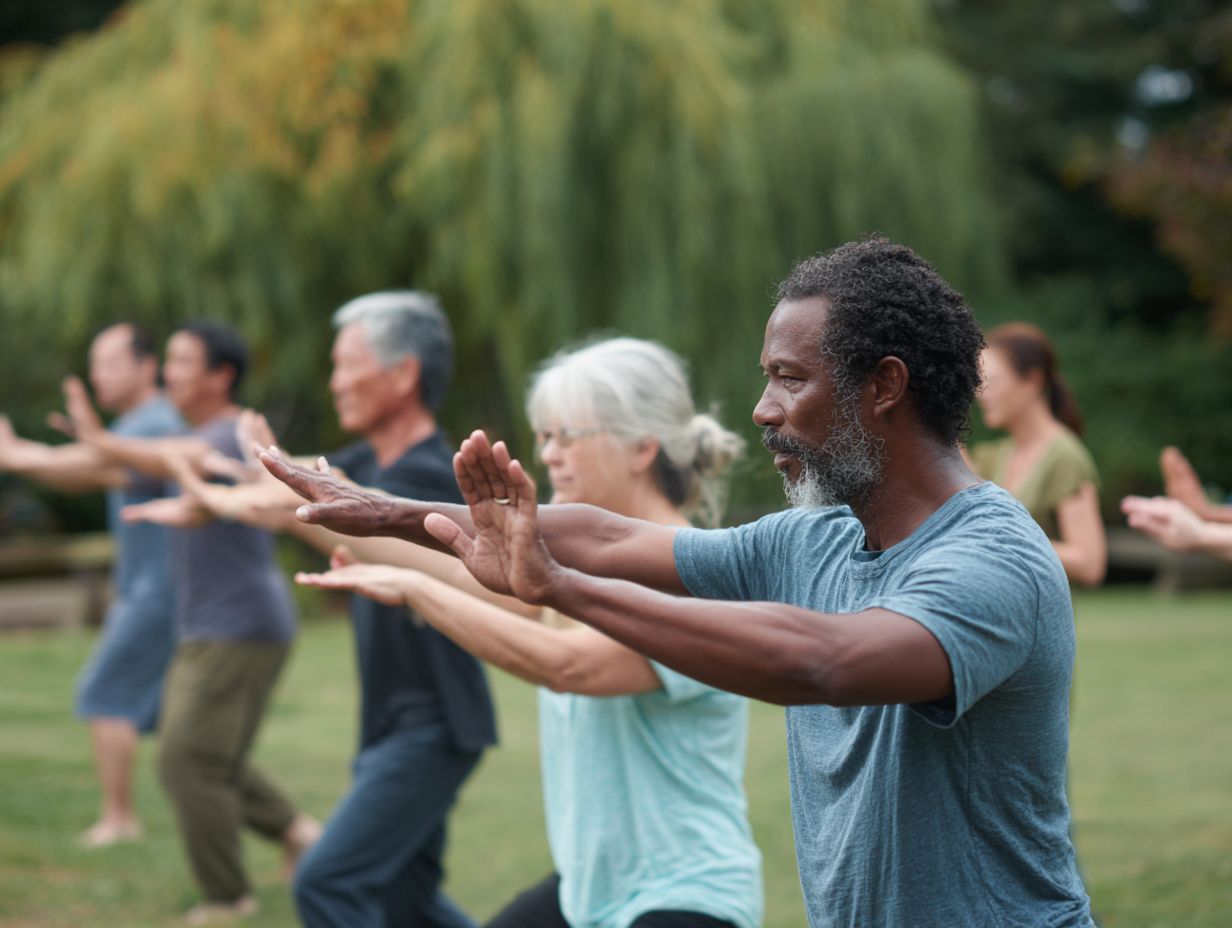
Tai Chi class costs can vary a lot based on the location, the teacher’s experience, and the number of students. Understand what you’re paying for.
In the United States, for example, group classes can cost anywhere from $10 to $25 per session, with higher fees in urban areas.
Private lessons tend to range from $50 to $100, influenced by the instructor’s qualifications and experience level.
In contrast, classes in countries like China may be more affordable, often between 30 to 100 RMB (about $5 to $15).
Prices can change based on things like the amenities at the facility and the number of people in a class. Smaller classes usually offer more individual attention, which can explain why they cost more.
Researching local options can help you find a balance between quality and cost.
Long-term Commitment
Practicing Tai Chi regularly over the long term can bring great benefits, but it requires a high level of commitment.
To truly reap the rewards of Tai Chi, aim for consistent practice-ideally, 30 minutes daily.
Begin with foundational forms and gradually progress to more advanced sequences as you build confidence and strength. Joining local classes or online workshops can offer helpful advice and build community support.
Consider tracking your progress through a journal to reflect on your development and experiences. As you keep going, you will notice improved flexibility, balance, and clearer thinking, making your effort meaningful.
Frequently Asked Questions
What are the key considerations when selecting a Tai Chi instructor?
Some key considerations when selecting a Tai Chi instructor include their experience, teaching style, availability, credentials, and location. It’s also important to consider the instructor’s approach to Tai Chi and if it aligns with your own goals.
What is the importance of an instructor’s experience in Tai Chi?
An instructor’s experience in Tai Chi can greatly impact your learning and progress. It’s important to choose an instructor with a strong background in Tai Chi and who has been teaching for a significant amount of time. This guarantees you get excellent teaching and advice.
How can I determine an instructor’s teaching style?
The best way to determine an instructor’s teaching style is to observe a class or attend a trial session. This will help you see how they organize their classes, how they communicate, and the speed at which they teach. You can also ask the instructor about how they teach Tai Chi to learn more.
What credentials should I look for in a Tai Chi instructor?
When selecting a Tai Chi instructor, it’s important to look for credentials such as certifications, workshops or training they have completed, and any other relevant qualifications. This will help you understand their skill and commitment to their work.
Is location an important factor when selecting a Tai Chi instructor?
Location can be an important factor when selecting a Tai Chi instructor, especially if you have a busy schedule. It’s best to choose an instructor who is conveniently located and easily accessible for you to attend classes regularly without any added stress or inconvenience.
What are some other factors to consider when selecting a Tai Chi instructor?
Other factors to consider when selecting a Tai Chi instructor include the cost of classes, class sizes, the atmosphere of the studio or location where classes are held, and the overall vibe or energy of the instructor. It’s important to choose someone who you feel comfortable with and who can provide a positive learning environment for you.

Sheetal Sharda has a background in CS. She got an interest in Holistic living back in 2018, and has since started exploring more into Naturapathy, Holistic Living, Yoga, and more. She got inspired to start SereneClinics to help people find reliable centers across the world.



